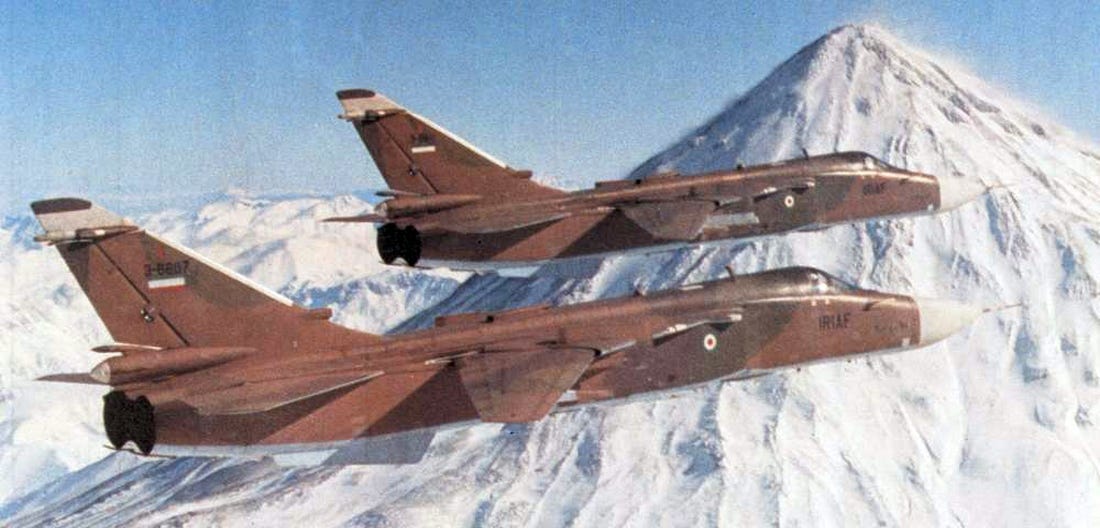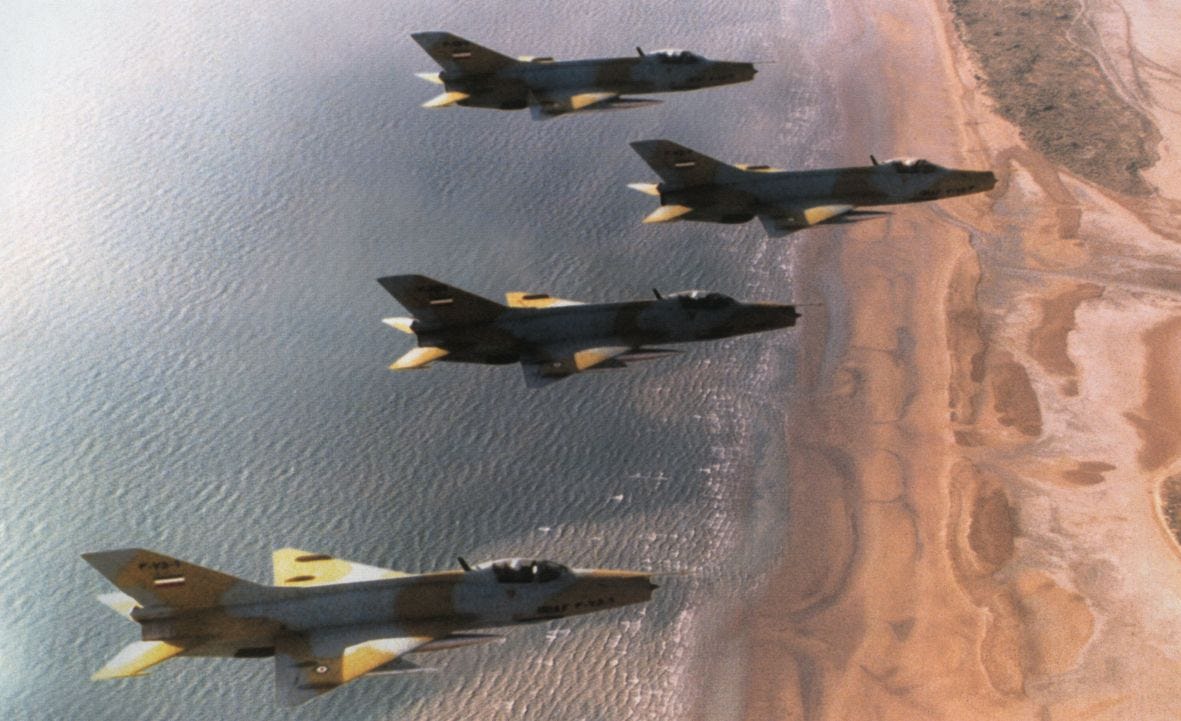Don’t believe news reports of huge arms deals
News reports claim that the Islamic Republic of Iran is in the process of deploying Russian-made S-300 surface-to-air missiles and is either negotiating for, or has already placed an order for, 300 T-90 main battle tanks and at least 30 Sukhoi Su-30 multirole fighter jets manufactured in the Russian Federation.
In reality, very little of these supposed Iranian orders for Russian arms have materialized so far, and they are also unlikely to materialize very soon.

The history of arms deals between Moscow and Tehran stretches back to a time when Shah Mohammed Reza Pahlavi was a close ally of the United States. Whenever Washington showed any reluctance to supply weapons the Iranians requested, the shah would place an order for similar Russian equipment.
That’s how it happened that Iran acquired not only 300 ZSU-23-4 self-propelled anti-aircraft guns, but also a batch of R-17E “Scud” surface-to-surface missiles and associated launchers from the USSR in the period between 1969 and 1978.
Following Iraq’s invasion of Iran in late September 1980, Moscow approached Tehran with an offer of weapons and cooperation. The Iranians rejected the Soviet overture and, for most of the following eight years, the Soviets sold ever-increasing amounts of armament to Iraq, instead.

That state of affairs dramatically changed only months after Tehran accepted a U.N.-sponsored ceasefire that ended the eight-year-long Iran-Iraq War in 1988. At the time, the Soviet Union was in a deep economic crisis and its government attempted to improve its financial situation through arms exports.
Soviet representatives approached Iran with an offer of 72 MiG-29s, 24 MiG-31s and 36 Su-24s. Still recovering from the long war, Tehran barely managed to scrape together enough money for 18 MiG-29s and 12 Su-24MKs, deliveries of which began in mid-1990.
With the USA and its allies preoccupied with Iraq’s invasion of Kuwait, this deal went nearly unnoticed, and all the aircraft arrived in Iran between 1990 and 1992.
In 1990, economic conditions had improved sufficiently for Tehran to place an order for 48 additional MiG-29s and 24 MiG-31s. However, the break-up of the Soviet Union and pressure from the USA prevented the conclusion of any of the related contracts.
In 1992, Tehran ordered 48 MiG-29s, 24 MiG-27s, 24 MiG-31s, 12 Tu-22 bombers and two A-50 radar planes. The Russians were eager to sell, but immense pressure from Washington — including an outright offer to buy the 24 MiG-31s in question at a higher price than Tehran could offer — prompted Moscow to cancel this deal.
Thus, despite countless news reports indicating otherwise, Iran never obtained MiG-31s or Tu-22s.

This nearly changed in 2001, when Tehran went as far as to provide up-front payment for 24 MiG-31s in attempt to prevent any kind of U.S. meddling. This time, pressure from Washington was sufficient only to force Russians into re-negotiating the order and delivering various air-defense equipment, instead — including 30 Pantsyr-S1 surface-to-air missile systems.
Ever since, hardly a year passes without another announcement about supposed massive Iranian buys of Russian aircraft. Recent examples include the famous reports from mid-2007 variously citing the sale to Iran of 250 Su-30MKs or 270 Su-27s — reports that ceased only after the CEO of Rosoboronexport, Sergei Chemezov, outright denied them.
Actually, it was in that year that Tehran placed an order for S-300 surface-to-air missiles and paid for them up-front — only to have this deal blocked by Russian president Dmitry Medvedev, in turn prompting Tehran to file a lawsuit against Moscow worth nearly $4 billion.
In July 2015, the Israeli website DEBKAfile announced an Iranian order for 100 Il-78MKI tanker aircraft, and only a month later claimed that China had agreed to sell Iran 150 Shenyang J-10 multirole fighter jets.
As usual, these stories amounted to little more than unsubstantiated rumors. Whether by accident or design, the report from 2007 surfaced just about the time Washington was negotiating a sale of F-35 stealth fighters to Israel and additional F-15s to Saudi Arabia.
Nevertheless, this history of fictional arms-deals hasn’t prevented various news sources from circulating similar rumors. In early 2016, for example, there was a report that Tehran would be buying hundreds of Mi-17 helicopters from Russia.
While there is no doubt that Iranians are interested in some Russian arms, they are not the least interested in others. They have had lots of bad experiences dealing with Russians — including not only repeated cancellations of earlier orders for combat aircraft, but also massive cost-overruns during construction of two reactors in Bushehr and Russian refusal to permit Iranians to trans-ship their petroleum and gas via Russian rivers and channels to the Caspian Sea.
Many influential Iranians are at least skeptical of Moscow’s reliability. But foremost, any Iranian-Russian arms deals must contend with a more fundamental problem — the very system of rule in Iran.
Nominally, Iran is ruled by a popularly-elected government and parliament. However, Iran’s constitution assigns exclusive sovereignty and right to legislate literally to God, and therefore dictates that all the democratic procedures and rights are subordinated to the Guardian Council and the Supreme Leader Grand Ayatollah Sayyid Ali Khamenei.
The latter is the commander-in-chief of the armed forces, the provisional head of the three branches of government and the director of the country’s media. This does not mean that Khamenei is ruling the country as an all-mighty autocrat. His power depends on support from dozens of rival cliques, most of which are a part of or at least associated with the Islamic Revolutionary Guards Corps.
warisboring.com
Confronted with the rising power of the cliques, Khamenei sought a solution in letting the various groups take over different segments of the Iranian economy, including banks and insurance, the judiciary, the construction industry, the real estate sector — and the defense sector.
The result is a completely dysfunctional chain of command and totally unworkable decision-making processes. Iran is ruled by an official government and parliament, but the final say always lies with the supreme leader, who in turn has to satisfy interests of too many different interest groups.
That is how it happened that, despite a standing order not to buy any arms from Russia until Moscow finally delivered the S-300s, the IRGC got permission to buy 24 T-90s in late 2015. Instead of introducing these to service at home, the Pasdaran had them distributed to two private military companies loyal to the regime of Syrian president Bashar Al Assad and two groups of the IRGC’s Iraqi surrogates in Syria.
Moreover, when the regular Islamic Republic of Iran Army decided to place an order for 300 T-90s in Moscow, different IRGC cliques pulled strings to have Khamenei cancel this order.
This left the Iranian joint chiefs of staff with no choice but to paper over the embarrassing back-and-forth by claiming that T-90s were redundant because Iran could simply produce its own new tank, the Karrar, at Iran’s tank-manufacturing facility in Doroud.
As with so many similar Iranian projects, Karrar exists only as a prototype. Although technically feasible, there’s almost no chance Iran will actually produceKarrar in large numbers because that would require support from the government, the supreme leader and dozens of different cliques controlling various of authorities and companies manufacturing the equipment necessary for such a project.
For similar reasons — and because the IRGC’s current priority is saving Assad’s dictatorship in Syria— an order for Su-30s is presently unlikely. Even should Moscow and Tehran find a way to arrange something like domestic license-manufacture, and assuming Washington didn’t intervene, fierce competition between different cliques controlling various parts of the Iranian defense sector is near-certain to prevent the effective management of such an enterprise.

